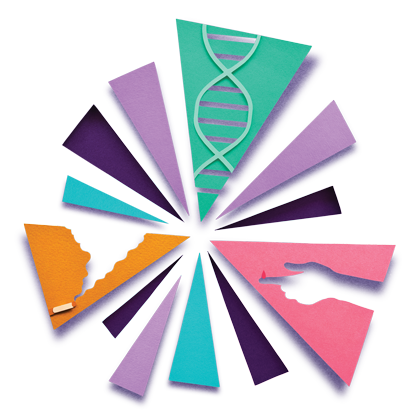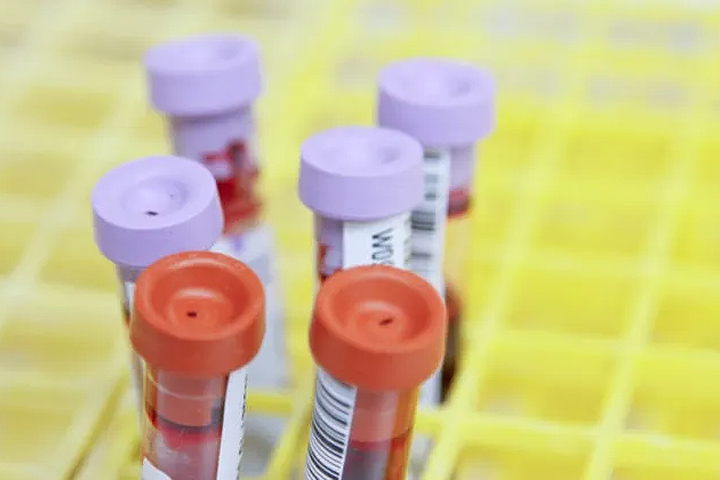Comprehensive Molecular Test Helps Classify Pancreatic Cysts

If you have a pancreatic cyst, your doctor probably has a clinical conundrum. Is it a noninvasive pseudocyst affiliated with chronic pancreatitis, or a potential precursor to cancer?
Pancreatic cysts are very common, but only a small proportion of them are cancerous or can progress to cancer. Telling the difference is complicated, to put it mildly. Cysts with the most malignant potential are neoplastic (they can grow into tumors). However, there are also some cystic neoplasms (serous cystadenomas, or SCAs) that can grow to be large, but are relatively harmless. And many neoplastic cysts (and even non-neoplastic cysts) can clinically mimic one another.
Current guidelines for assessing whether a pancreatic cyst is cancerous mostly rely on imaging of features such as size and growth rate, and many argue that these tests are not sensitive enough. Researchers have turned to advanced sequencing technology to better distinguish pancreatic cystic lesions, in hopes of predicting their malignant potential and optimizing patient management.
Seeking Out Sequencing-Based Solutions
Inspired by the burgeoning advances in pancreatic cancer genetics knowledge, researchers at the Molecular & Genomic Pathology Laboratory at the University of Pittsburgh Medical Center (Pennsylvania) set out to create a comprehensive DNA/RNA-based next-generation sequencing panel and genomic classifier to test pancreatic cyst fluid and integrate the complex molecular results into information that could guide clinical decision-making for individual patients.
The resulting product, PancreaSeq® Genomic Classifier, is a unique molecular test that targets 74 genes to evaluate five classes of genomic alterations including gene mutations, gene fusions, and gene expression believed to correlate with pancreatic lesions.
“Being able to identify the differences between benign cysts and potentially cancerous pancreatic neoplasms is so important when it comes to stratifying patients for appropriate surveillance protocols and management options, as well as easing their anxiety,” says Aatur Singhi, M.D., Ph.D., associate professor at the University of Pittsburgh Department of Pathology and UPMC Hillman Cancer Center.
“But there are a lot of intricacies and nuances in evaluating the differences, and we wanted to improve upon current molecular assays with a highly sensitive and specific multi-biomarker approach.”
Catching Cancer While Avoiding Unnecessary Surgeries
Clinical validity of the PancreaSeq® test was initially established in several studies, including a large prospective multicenter study of 1,889 patients with pancreatic cysts reported in Gastroenterology. As the researchers described in an October 2023 paper in the Annals of Surgery, they tested an updated version of the panel and validated its diagnostic performance in 185 pancreatic cyst fluid specimens.
They first “trained” the test by sequencing 108 preoperative pancreatic cyst fluid specimens that correspond to 72 cystic precursors to pancreatic cancer and 36 other neoplastic and non-neoplastic pancreatic cysts. They looked for mutations in genes such as KRAS, BRAF, and PTEN mutations, as well as other complex genomic alterations and differential gene expression.
In one case, for instance, a 3.5-cm pancreatic tail cyst with otherwise no concerning preoperative clinical, imaging, or preoperative pathology findings was determined to have a KRAS mutation and loss of heterozygosity (genetic diversity), a marker of cancer development, for RNF43 and TP53 during PancreaSeq® testing.
The researchers then integrated the presence versus absence of these alterations to come up with a cystic precursor score and establish a genomic classifier for the risk of early pancreatic cancer.
They found that the PancreaSeq® test was not only accurate in predicting pancreatic cyst type and advanced neoplasia—with sensitivity and specificity as high as 95 percent and 100 percent, respectively—but that it also improved the sensitivity of current pancreatic cyst guidelines.
The test also does an excellent job at identifying cystic pancreatic neuroendocrine tumors (CPanNETs) and may represent the foundation from which to build prognostic biomarkers for that condition. It may also have applications in other patient populations, or to help inform pancreatic cancer care, by identifying genetic mutations that could be targeted through precision medicine therapies, Dr. Singhi explains.
“We believe PancreaSeq® GC will make a big difference in how we classify and manage patients moving forward,” he adds. “Our hope is that it catches cancer early while preventing unnecessary surgeries.”
An Ever-Evolving Tool
The PancreaSeq® test has been eight years in the making, and has involved countless collaborations with other academic institutions, clinicians, and even patients.
There was plenty of trial and error at first as its creators worked out the right algorithms, testing protocols and logistics, such as how to collect and ship the cystic fluid specimens nationally and internationally. It’s still a work in progress, as they continue to incorporate new knowledge about genetic biomarkers, improve their analysis algorithms, and tweak their result reports based on physician and patient feedback.
More than 10,000 patients have been tested so far, with numbers growing each year. In addition to being used as a clinical service, PancreaSeq® is also a tool for collaborative science. Singhi and his collaborators have been applying for grants to both expand the reach of their research as well as access to the test for those in underserved populations.
“There’s so much that can be done. We’re looking at different ways to integrate different data, include actionable information in our reports, and ultimately improve patient care,” he says.




